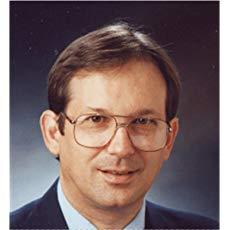Technology and the Accessible Church

This article is part of our Spring 2020 Breaking Barriers. This installment focuses on people living with visual impairments. This article was written by Dr. John Jay Frank who attends Westwood CRC in Kalamazoo, MI. If you'd like to read more stories from this issue, please subscribe to Breaking Barriers.
As a young teenager I believed in Jesus Christ as my Savior and was baptized. My church gave me a Bible with standard print that was too small for me to read even with glasses. They probably did not know large print existed and neither did I. Twelve years later, by the grace of the Lord, I discovered larger print Bibles and became an avid Bible reader.
In a church I recently visited, an usher wearing a nametag with letters too tiny for me to read gave me a bulletin with tiny print, well below standard 12-point Arial font. When I asked if he had one in large print, he made a shocked expression with his face as said “No.” The next week I asked another usher, who laughed while he said “No.” I did not pursue this as I know the burden it is to ask for or search for access.
I could read the giant projected notice OFFERING. The projected song lyrics, however, were small white letters on a background of white. Both the lack of contrast and small letter size made the words nearly invisible—and not just to me. (A color contrast wheel, presenting the best color contrasts for visibility, can be found online.) More words, lyrics, and Scripture passages were projected on pictures, with some slides changing too fast to read and process. The computer projection seemed to me to be more a cultural condiment rather than a teaching tool; slides should not exceed 15 words.
Accessible use of information technology takes effort, but it is not difficult, expensive, or time consuming. Many churches still misuse their technology. Some confuse accessibility as referring to what a church could provide through a special “disability ministry,” when it is really about how churches can regularly set up their technology using universal design in order to be a welcoming place that includes more people.
Perhaps as many as 100 million people in the U.S. (almost a third of the population) and 18 million people in Canada (almost half the population) can see, read, or hear somewhat, but not as well as their neighbors. How we set up and use our communication technology in church is about evangelism, missions, the care and nurturing of believers, the Great Commandment, and the Great Commission.

Disability Concerns, Church Admin & Finance
Disability Concerns, Church Admin & Finance
Disability Concerns, Training and Education
Disability Concerns
Connect to The Network and add your own question, blog, resource, or job.
Add Your Post
Let's Discuss
We love your comments! Thank you for helping us uphold the Community Guidelines to make this an encouraging and respectful community for everyone.